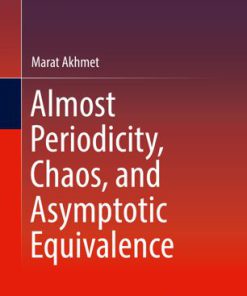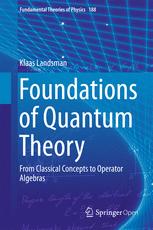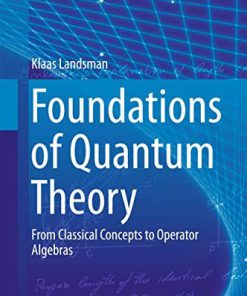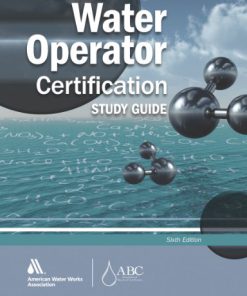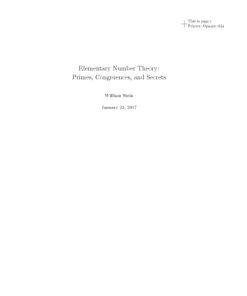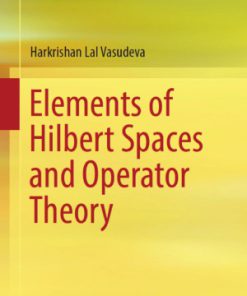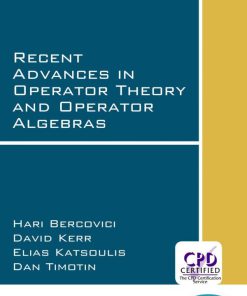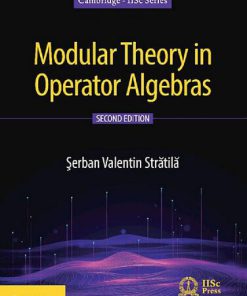Elementary Operator Theory 1st Edition by Marat Markin 3110598889 9783110598889
$50.00 Original price was: $50.00.$25.00Current price is: $25.00.
Elementary Operator Theory 1st Edition by Marat V. Markin – Ebook PDF Instant Download/DeliveryISBN: 3110598889, 9783110598889
Full download Elementary Operator Theory 1st Edition after payment.
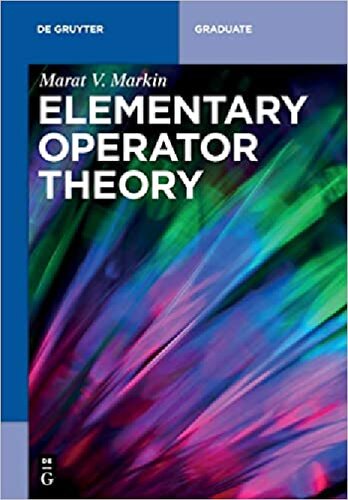
Product details:
ISBN-10 : 3110598889
ISBN-13 : 9783110598889
Author: Marat V. Markin
The book is intended as a text for a one-semester graduate course in operator theory to be taught “from scratch”, not as a sequel to a functional analysis course, with the basics of the spectral theory of linear operators taking the center stage. The book consists of six chapters and appendix, with the material flowing from the fundamentals of abstract spaces (metric, vector, normed vector, and inner product), the Banach Fixed-Point Theorem and its applications, such as Picard’s Existence and Uniqueness Theorem, through the basics of linear operators, two of the three fundamental principles (the Uniform Boundedness Principle and the Open Mapping Theorem and its equivalents: the Inverse Mapping and Closed Graph Theorems), to the elements of the spectral theory, including Gelfand’s Spectral Radius Theorem and the Spectral Theorem for Compact Self-Adjoint Operators, and its applications, such as the celebrated Lyapunov Stability Theorem. Conceived as a text to be used in a classroom, the book constantly calls for the student’s actively mastering the knowledge of the subject matter. There are problems at the end of each chapter, starting with Chapter 2 and totaling at 150. Many important statements are given as problems and frequently referred to in the main body. There are also 432 Exercises throughout the text, including Chapter 1 and the Appendix, which require of the student to prove or verify a statement or an example, fill in certain details in a proof, or provide an intermediate step or a counterexample. They are also an inherent part of the material. More difficult problems are marked with an asterisk, many problems and exercises are supplied with “existential” hints. The book is generous on Examples and contains numerous Remarks accompanying definitions, examples, and statements to discuss certain subtleties, raise questions on whether the converse assertions are true, whenever appropriate, or whether the conditions are essential.
Elementary Operator Theory 1st Table of contents:
1 Preliminaries
1.1 Set-Theoretic Basics
1.1.1 Some Terminology and Notations
1.1.2 Cardinality and Countability
1.2 Terminology Related to Functions
1.3 Upper and Lower Limits
1.4 Certain Facts from Linear Algebra
1.4.1 Coordinate Vector Mapping
1.4.2 Matrix Representations of Linear Operators
1.4.3 Change of Basis, Transition Matrices
1.4.4 Cayley–Hamilton Theorem
2 Metric Spaces
2.1 Definition and Examples
2.2 Hölder’s and Minkowski’s Inequalities
2.2.1 Conjugate Indices
2.2.2 Young’s Inequality
2.2.3 The Case of n-Tuples
2.2.4 Sequential Case
2.3 Subspaces of a Metric Space
2.4 Function Spaces
2.5 Further Properties of Metric
2.6 Convergence and Continuity
2.6.1 Convergence
2.6.2 Continuity, Uniform Continuity, and Lipschitz Continuity
2.7 Balls, Separation, and Boundedness
2.8 Interior Points, Interiors, Open Sets
2.9 Limit and Isolated Points, Closures, Closed Sets
2.10 Exterior and Boundary
2.11 Dense Sets and Separability
2.12 Equivalent Metrics, Homeomorphisms and Isometries
2.12.1 Equivalent Metrics
2.12.2 Homeomorphisms and Isometries
2.13 Completeness
2.13.1 Cauchy/Fundamental Sequences
2.13.2 Complete Metric Spaces
2.13.3 Subspaces of Complete Metric Spaces
2.13.4 Nested Balls Theorem
2.14 Category and Baire Category Theorem
2.14.1 Nowhere Denseness
2.14.2 Category
2.14.3 Baire Category Theorem
2.15 Banach Fixed-Point Theorem and Applications
2.15.1 Fixed Points
2.15.2 Contractions
2.15.3 Banach Fixed-Point Theorem
2.15.4 Applications
2.16 Compactness
2.16.1 Total Boundedness
2.16.2 Compactness, Precompactness
2.16.3 Hausdorff Criterion
2.16.4 Compactness in Certain Complete Metric Spaces
2.16.5 Other Forms of Compactness
2.16.6 Equivalence of Different Forms of Compactness
2.16.7 Compactness and Continuity
2.17 Arzelà–Ascoli Theorem
2.17.1 Space (C(X,Y),ρ∞)
2.17.2 Uniform Boundedness and Equicontinuity
2.17.3 Arzelà–Ascoli Theorem
2.17.4 Application: Peano’s Existence Theorem
2.18 Problems
3 Vector Spaces, Normed Vector Spaces, and Banach Spaces
3.1 Vector Spaces
3.1.1 Definition, Examples, Properties
3.1.2 Homomorphisms and Isomorphisms
3.1.3 Subspaces
3.1.4 Spans and Linear Combinations
3.1.5 Linear Independence, Hamel Bases, Dimension
3.1.6 New Spaces from Old
3.1.7 Disjoint and Complementary Subspaces, Direct Sum Decompositions, Deficiency and Codimension
3.2 Normed Vector and Banach Spaces
3.2.1 Definitions and Examples
3.2.2 Series and Completeness Characterization
3.2.3 Comparing Norms, Equivalent Norms
3.2.4 Isometric Isomorphisms
3.2.5 Topological and Schauder Bases
3.3 Finite-Dimensional Spaces and Related Topics
3.3.1 Norm Equivalence and Completeness
3.3.2 Finite-Dimensional Subspaces and Bases of Banach Spaces
3.4 Riesz’s Lemma and Implications
3.5 Problems
4 Linear Operators
4.1 Linear Operators and Functionals
4.1.1 Definitions and Examples
4.1.2 Kernel, Range, and Graph
4.1.3 Rank-Nullity and Extension Theorems
4.2 Bounded Linear Operators and Functionals
4.2.1 Definitions, Properties, Examples
4.2.2 Kernel
4.2.3 Space of Bounded Linear Operators, Dual Space
4.3 Uniform Boundedness Principle
4.4 Open and Inverse Mapping Theorems
4.4.1 Open Mapping Theorem
4.4.2 Inverse Mapping Theorem and Applications
4.5 Closed Linear Operators, Closed Graph Theorem
4.5.1 Definition, Characterizations, Examples
4.5.2 Kernel
4.5.3 Closed Graph Theorem
4.5.4 Application: Projection Operators
4.6 Equivalence of OMT, IMT, and CGT
4.7 Problems
5 Elements of Spectral Theory in a Banach Space Setting
5.1 Algebraic Operations on Linear Operators
5.2 Resolvent Set and Spectrum of a Closed Linear Operator
5.2.1 Definitions
5.2.2 Spectrum Classification, Geometric Multiplicity
5.2.3 Examples
5.3 Spectral Radius
5.4 Resolvent of a Closed Linear Operator
5.4.1 Definition and Examples
5.4.2 Resolvent Identity
5.4.3 Analytic Vector Functions
5.4.4 Neumann Expansion Theorem
5.4.5 Properties of Resolvent Set and Resolvent Function
5.4.6 Spectrum
5.5 Spectral Theory of Bounded Linear Operators
5.5.1 Gelfand’s Spectral Radius Theorem
5.5.2 Quasinilpotent Operators
5.5.3 Operator Polynomials
5.5.4 Operator Exponentials
5.6 Spectral Theory in a Finite-Dimensional Setting
5.6.1 Basics
5.6.2 Special Matrix Representations
5.6.3 Spectral Decomposition
5.6.4 Application: Abstract Evolution Equations
5.7 Compact Linear Operators
5.7.1 Definition, Characterization, Examples
5.7.2 Compactness of the Identity Operator
5.7.3 Properties
5.7.4 Approximation by Finite-Rank Operators
5.7.5 Fredholm Alternative
5.7.6 Spectrum of a Compact Operator, Riesz–Schauder Theorem
5.7.7 Application: Fredholm Integral Equations of the Second Kind
5.8 Problems
6 Elements of Spectral Theory in a Hilbert Space Setting
6.1 Inner Product and Hilbert Spaces
6.1.1 Definitions and Examples
6.1.2 Inner Product Norm, Cauchy–Schwarz Inequality
6.1.3 Hilbert Spaces
6.1.4 Geometric Properties of Inner Product Norm
6.2 Convexity and Nearest Point Property
6.2.1 Convexity
6.2.2 Nearest Point Property
6.3 Projection Theorem
6.3.1 Orthogonal Complements
6.3.2 Projection Theorem
6.3.3 Orthogonal Projections
6.4 Riesz Representation Theorem
6.5 Orthogonal and Orthonormal Sets
6.6 Gram–Schmidt Process
6.7 Generalized Fourier Series
6.7.1 Finite Orthonormal Set
6.7.2 Arbitrary Orthonormal Set
6.7.3 Orthonormal Sequence
6.8 Orthonormal Bases and Orthogonal Dimension
6.9 Adjoint Operators
6.9.1 Definition, Linearity, Examples
6.9.2 Existence, Graph, and Closedness
6.9.3 Second Adjoint
6.9.4 Properties
6.9.5 Inverse of Adjoint, Orthogonal Sum Decompositions
6.9.6 Spectrum of Adjoint Operator
6.10 Symmetry and Self-Adjointness
6.10.1 Definitions, Examples, Properties
6.10.2 Spectrum and Eigenvectors of a Self-Adjoint Operator
6.10.3 Bounded Self-Adjoint Operators
6.11 Compact Operators
6.11.1 Fredholm Alternative in a Hilbert Space Setting
6.11.2 Compact Self-Adjoint Operators, Spectral Theorem
6.12 Problems
People also search for Elementary Operator Theory 1st:
elementary number theory
what is operator theory
elementary operator theory pdf
elementary operations matrix
elementary theory of groups
Tags: Elementary, Operator Theory, Marat Markin, Uniqueness Theorem
You may also like…
Physics - Quantum Physics
Physics - Quantum Physics
Politics & Philosophy - Social Sciences
Mathematics - Operator Theory
Mathematics
Mathematics - Algebra
Modular Theory in Operator Algebras Second Edition Șerban Valentin Strătilă


